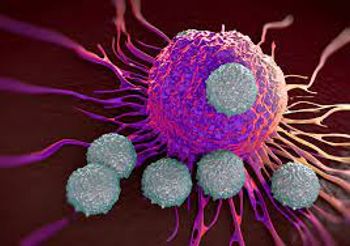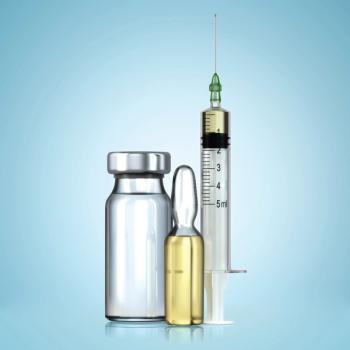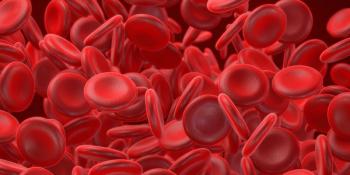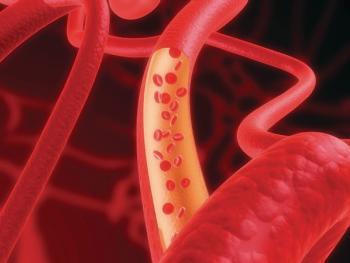
A new report suggests patients with persistent nail psoriasis may benefit from biologics like tildrakizumab.
Jared is a freelance writer for The American Journal of Managed Care® (AJMC®), and previously worked as a senior editor for HCPLive® at MJH Life Sciences®.
He has an MA from University of Sioux Falls. You can connect with Jared on LinkedIn.

A new report suggests patients with persistent nail psoriasis may benefit from biologics like tildrakizumab.

A handful of systemic therapies can be prescribed off label to effectively treat atopic dermatitis (AD), but investigators said a biologic option may be best for many patients.

Although existing research has shown structural differences between multiple sclerosis (MS) and neuromyelitis optica spectrum disorder in following optic neuritis, the new report also covers non–optic neuritis eyes.

Alcohol abuse, obesity, and the use of systemic therapies instead of biologics were all linked with poor response among individuals with psoriasis.

Clinical trials and postmarketing surveillance suggest secukinumab has a favorable safety profile and low rates of discontinuation. A new study evaluated those metrics in a real-world setting in axial spondyloarthritis (AxSpA) and psoriatic arthritis (PsA).

Both sets of data were unveiled at the 2021 American Society of Clinical Oncology (ASCO) Annual Meeting, which was held earlier this month in a virtual format.

The analysis identified 4 genes that were driven by atopic dermatitis (AD) and which had significant expression changes in favor of MDD development.

The report gives a more holistic picture of a highly studied by little understood issue in multiple sclerosis.

Three biologics appeared to increase herpes zoster risk, but 2 other therapies were shown to lower the risk, according to a study of patients in a Taiwanese national database.

About one-third of patients prefer in-hospital administration, particularly if they are older or already make frequent visits to the hospital.

Older patients with chronic kidney disease face higher risks of intensive care unit admission and in-hospital mortality if they contract COVID-19, a new report shows.

Individuals with insomnia had 1.41 times the risk of developing hypertension, compared with people without the sleep disorder.

Patients with atopic dermatitis (AD) benefit from extensive patient education. A new report suggests group-based sessions are preferred to individual educational sessions or fun activities.

Existing research has focused on skin symptoms, but a new study looks for alterations in the blood associated with moderate-to-severe atopic dermatitis.

The new study identified altered microRNA (miRNA) in gray matter lesions, which could provide a new important marker of multiple sclerosis (MS) progression.

About 5.4% of patients with end-stage renal disease (ESRD) who begin renal replacement therapy as children go on to have vascular events, and 4.1% of those patients die as a result of vascular events, though the real incidence rates are likely higher, according to new research.

Patient social cognition remained stable over 3 years, but its correlation with structural damage in the brain changed over time.

Some consider patients with type 2 diabetes (T2D) and chronic kidney disease poor candidates for metformin monotherapy due to the risk of lactic acidosis. However, new research finds patients who can tolerate the drug can gain similar benefits with or without kidney disease.

A new report shows work-related quality of life in general—and also in terms of physical and mental/emotional health—improved when patients began treatment for atopic dermatitis.

The new report, based on more than 80,000 health records, suggests positive airflow pressure therapy can reduce a patient’s risk of infection.

Confirmed disability progression is often used as a study endpoint to predict progression, but a new report says its predictive value may be overblown.

The new analysis suggests that dementia screenings might also include kidney function estimation.

People who suffer from shift work sleep disorder face the highest risk of a car crash, although sleep apnea and insomnia also heighten a person’s risk.

Children with severe atopic dermatitis, in particular, were less likely than a control group to complete education at all levels, from basic compulsory education to postgraduate education.

A series of 5 cases highlights different opportunities to incorporate selexipag into the care of patients with pulmonary arterial hypertension, potentially eliminating risks associated with parenteral prostacyclin.

When patients had the option of using prescription digital therapeutics, their insurers and employers saved significant money in both direct and indirect medical costs, the 2 studies found.

Right ventricular end-systolic elastance to end-systolic arterial elastance coupling in excess of 0.68 was linked with preserved right ventricular function and better survival outcomes in patients with heart failure with reduced ejection fraction and secondary pulmonary hypertension.

A report using data from the DAPA-CKD study found that dapagliflozin would lead to more than $99 million in savings in a population matched to the trial’s inclusion criteria.

A small study, based on 4 family members with Fabry disease, affirms the importance of early enzyme replacement therapy.

About 90% of patients are diagnosed with rheumatoid arthritis in an outpatient setting, while the 10% diagnosed in an emergency department or as inpatients incur significantly higher health care costs.

259 Prospect Plains Rd, Bldg H
Cranbury, NJ 08512
© 2025 MJH Life Sciences®
All rights reserved.
